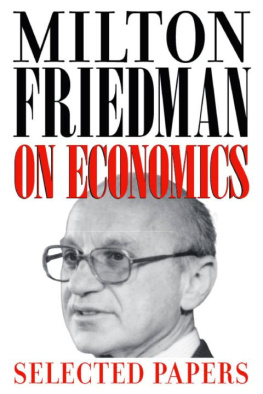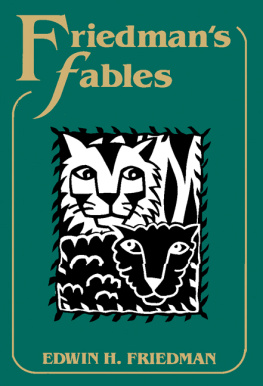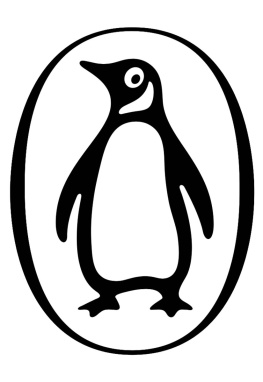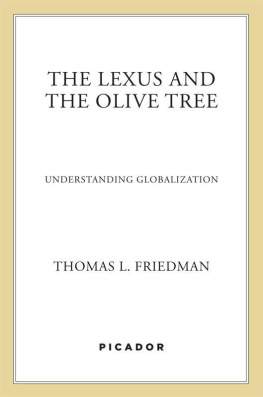Thomas Friedman
The World is Flat
How the World Became Flat
ONE: While I Was Sleeping
To Matt and Kay and to Ron
Your Highnesses, as Catholic Christians, and princes who love and promote the holy Christian faith, and are enemies of the doctrine of Mahomet, and of all idolatry and heresy, determined to send me, Christopher Columbus, to the above-mentioned countries of India, to see the said princes, people, and territories, and to learn their disposition and the proper method of converting them to our holy faith; and furthermore directed that I should not proceed by land to the East, as is customary, but by a Westerly route, in which direction we have hitherto no certain evidence that anyone has gone.
Entry from the journal of Christopher Columbus on his voyage of 1492
No one ever gave me directions like this on a golf course before: Aim at either Microsoft or IBM. I was standing on the first tee at the KGA Golf Club in downtown Bangalore, in southern India, when my playing partner pointed at two shiny glass-and-steel buildings off in the distance, just behind the first green. The Goldman Sachs building wasn't done yet; otherwise he could have pointed that out as well and made it a threesome. HP and Texas Instruments had their offices on the back nine, along the tenth hole. That wasn't all. The tee markers were from Epson, the printer company, and one of our caddies was wearing a hat from 3M. Outside, some of the traffic signs were also sponsored by Texas Instruments, and the Pizza Hut billboard on the way over showed a steaming pizza, under the headline Gigabites of Taste!
No, this definitely wasn't Kansas. It didn't even seem like India. Was this the New World, the Old World, or the Next World?
I had come to Bangalore, India's Silicon Valley, on my own Columbus-like journey of exploration. Columbus sailed with the Nina, the Pinta, and the Santa Maria in an effort to discover a shorter, more direct route to India by heading west, across the Atlantic, on what he presumed to be an open sea route to the East Indies-rather than going south and east around Africa, as Portuguese explorers of his day were trying to do. India and the magical Spice Islands of the East were famed at the time for their gold, pearls, gems, and silk-a source of untold riches. Finding this shortcut by sea to India, at a time when the Muslim powers of the day had blocked the overland routes from Europe, was a way for both Columbus and the Spanish monarchy to become wealthy and powerful. When Columbus set sail, he apparently assumed the Earth was round, which was why he was convinced that he could get to India by going west. He miscalculated the distance, though. He thought the Earth was a smaller sphere than it is. He also did not anticipate running into a landmass before he reached the East Indies. Nevertheless, he called the aboriginal peoples he encountered in the new world Indians. Returning home, though, Columbus was able to tell his patrons, King Ferdinand and Queen Isabella, that although he never did find India, he could confirm that the world was indeed round.
I set out for India by going due east, via Frankfurt. I had Lufthansa business class. I knew exactly which direction I was going thanks to the GPS map displayed on the screen that popped out of the armrest of my airline seat. I landed safely and on schedule. I too encountered people called Indians. I too was searching for the source of India's riches. Columbus was searching for hardware-precious metals, silk, and spices-the source of wealth in his day. I was searching for software, brainpower, complex algorithms, knowledge workers, call centers, transmission protocols, breakthroughs in optical engineering-the sources of wealth in our day. Columbus was happy to make the Indians he met his slaves, a pool of free manual labor.
I just wanted to understand why the Indians I met were taking our work, why they had become such an important pool for the outsourcing of service and information technology work from America and other industrialized countries. Columbus had more than one hundred men on his three ships; I had a small crew from the Discovery Times channel that fit comfortably into two banged-up vans, with Indian drivers who drove barefoot. When I set sail, so to speak, I too assumed that the world was round, but what I encountered in the real India profoundly shook my faith in that notion. Columbus accidentally ran into America but thought he had discovered part of India. I actually found India and thought many of the people I met there were Americans. Some had actually taken American names, and others were doing great imitations of American accents at call centers and American business techniques at software labs.
Columbus reported to his king and queen that the world was round, and he went down in history as the man who first made this discovery. I returned home and shared my discover)' only with my wife, and only in a whisper.
Honey, I confided, I think the world is flat.
How did I come to this conclusion? I guess you could say it all started in Nandan Nilekani's conference room at Infosys Technologies Limited. Infosys is one of the jewels of the Indian information technology world, and Nilekani, the company's CEO, is one of the most thoughtful and respected captains of Indian industry. I drove with the Discovery Times crew out to the Infosys campus, about forty minutes from the heart of Bangalore, to tour the facility and interview Nilekani. The Infosys campus is reached by a pockmarked road, with sacred cows, horse-drawn carts, and motorized rickshaws all jostling alongside our vans. Once you enter the gates of Infosys, though, you are in a different world. A massive resort-size swimming pool nestles amid boulders and manicured lawns, adjacent to a huge putting green. There are multiple restaurants and a fabulous health club. Glass-and-steel buildings seem to sprout up like weeds each week. In some of those buildings, Infosys employees are writing specific software programs for American or European companies; in others, they are running the back rooms of major American and European-based multinationalseverything from computer maintenance to specific research projects to answering customer calls routed there from all over the world. Security is tight, cameras monitor the doors, and if you are working for American Express, you cannot get into the building that is managing services and research for General Electric. Young Indian engineers, men and women, walk briskly from building to building, dangling ID badges. One looked like he could do my taxes. Another looked like she could take my computer apart. And a third looked like she designed it!
After sitting for an interview, Nilekani gave our TV crew a tour of Info-sys's global conferencing center-ground zero of the Indian outsourcing industry. It was a cavernous wood-paneled room that looked like a tiered classroom from an Ivy League law school. On one end was a massive wall-size screen and overhead there were cameras in the ceiling for teleconferencing. So this is our conference room, probably the largest screen in Asia-this is forty digital screens [put together], Nilekani explained proudly, pointing to the biggest flat-screen TV I had ever seen. Infosys, he said, can hold a virtual meeting of the key players from its entire global supply chain for any project at any time on that supersize screen. So their American designers could be on the screen speaking with their Indian software writers and their Asian manufacturers all at once. We could be sitting here, somebody from New York, London, Boston, San Francisco, all live. And maybe the implementation is in Singapore, so the Singapore person could also be live here... That's globalization, said Nilekani. Above the screen there were eight clocks that pretty well summed up the Infosys workday: 24/7/365. The clocks were labeled US West, US East, GMT, India, Singapore, Hong Kong, Japan, Australia.









